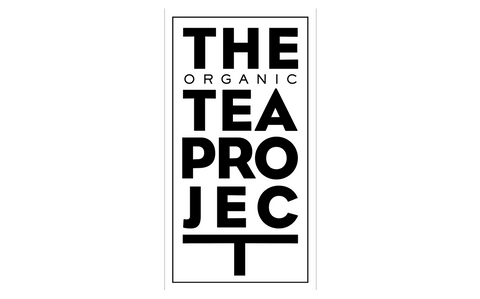Green Tea vs Black Tea: Which is Healthier?

Two of the most popular teas worldwide are green tea and black tea. Both come from the same plant — Camellia sinensis — but the way the leaves are processed (and which variety they come from) makes all the difference.
At The Organic Tea Project, we offer both: a high-grown Darjeeling Green Tea, and several black teas — delicate Darjeeling, bold Assam blended with smooth Nilgiri in our Organic Breakfast Tea, Assam in our Sticky Chai, and Assam paired with bergamot in our Earl Grey. Let’s explore the differences and ask: which is healthier?
The Tea Plant: Sinensis vs Assamica
There are two main varieties of the tea plant:
-
Camellia sinensis var. sinensis – smaller leaves, grown at high altitudes, producing delicate teas like Darjeeling.
-
Camellia sinensis var. assamica – larger leaves, grown in warmer climates, producing strong, malty teas like Assam.
Our green tea is made from Darjeeling (sinensis), gently steamed to lock in freshness, while our Breakfast blend combines Assam (assamica) with high-grown Nilgiri (sinensis), creating a bold but balanced cup.

How Processing Changes the Leaf
-
Green Tea – Quickly steamed or pan-fired to stop oxidation. Leaves remain green, producing a crisp, floral, lighter cup.

-
Black Tea – Fully oxidised, turning the leaves dark and developing robust, malty flavours.

This shift in processing also changes caffeine levels and the types of antioxidants present.
The Benefits of Green Tea
Darjeeling Green Tea is prized for its clean, refreshing taste and lighter body. Its steaming process preserves catechins, a class of antioxidants that help protect the body from oxidative stress.
-
Lower caffeine – gentler than black tea or coffee.
-
High-grown clarity – Darjeeling’s altitude gives a crisp, floral profile.
-
Traditionally valued – enjoyed in Asia for centuries as part of daily wellness rituals.
👉 Explore our Organic Green Tea Collection.
The Benefits of Black Tea
Our Organic Breakfast Tea blends Assam and Nilgiri for a rich, multi-dimensional flavour. Assam contributes depth and maltiness, while Nilgiri balances with smooth, aromatic notes.
-
Higher caffeine – perfect for mornings.
-
Theaflavins – unique antioxidants formed during oxidation.
-
Full-bodied ritual – satisfying on its own or with milk.
👉 Discover our Organic Breakfast Tea Collection.
Which is Healthier?
Both green and black tea bring unique strengths:
-
Green tea: more catechins, less caffeine, delicate flavour.
-
Black tea: stronger caffeine, malty flavour, different antioxidants (theaflavins).
The healthiest option depends on what you’re after — a lighter afternoon lift, or a robust morning kickstart.
Brewing Tips for Green Tea
Getting the best out of green tea takes a little care:
-
Temperature matters – always brew under 80°C; hotter water can make it bitter.
-
Second brews – green tea leaves can be steeped twice. Add hot water again for a lighter, refreshing second cup.
-
Reducing caffeine – a traditional trick: steep once for 30 seconds, pour out the liquid, then re-steep. Most of the caffeine is released in the first brew, so the second cup will be gentler.
Bottom Line
Green and black teas share the same roots, but differences in plant variety and processing give each its own strengths.
At TOTP, our Darjeeling Green Tea is crisp, refreshing, and antioxidant-rich, while our Breakfast blend of Assam and Nilgiri is bold, malty, and energising. Both are organic, whole leaf, and crafted for tea drinkers who value flavour and authenticity
Comparison Chart
| Aspect | Green Tea (Darjeeling) | Black Tea (Breakfast Blend) |
|---|---|---|
| Plant Variety | Camellia sinensis var. sinensis | Mix of assamica (Assam) + sinensis (Nilgiri) |
| Processing | Steamed to stop oxidation | Fully oxidised |
| Caffeine | Lower (gentle lift) | Higher (energising) |
| Antioxidants | Catechins (EGCG) | Theaflavins |
| Flavour | Crisp, floral, light | Malty, robust, full-bodied |
| Best Time to Drink | Afternoon, or light refreshment | Morning, with or without milk |
| TOTP Example | Darjeeling Green Tea | Organic Breakfast Tea |

